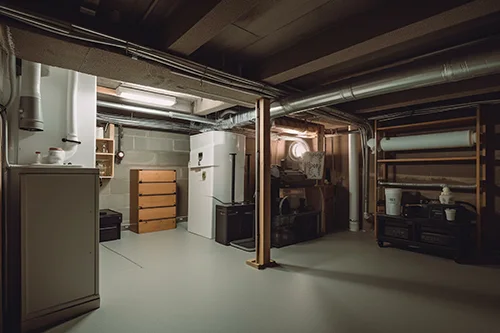Radon Ingress Focus Points Within Your Home

Within the domain of indoor air quality apprehensions, radon gas often remains surreptitious, yet its implications for health can be profound. Radon, an inherently arising radioactive gas, can permeate domiciles from the earth below, posing a notable hazard of lung cancer if overlooked. Comprehending the locations and methods through which radon infiltrates residences is pivotal for efficacious mitigation. In this article, we explore the concealed avenues through which radon invades our living quarters.
The Subtle Intruder: Mechanisms of Radon Penetration into Dwellings
Radon stems from the disintegration of uranium in soil, rock, and water. Being colorless, odorless, and tasteless, it eludes detection without specialized apparatus. As radon emanates from the ground, it can effortlessly infiltrate residences via diverse ingress points, comprising:
Fractures in Foundations: Minute crevices in the foundation, walls, or flooring of a domicile act as direct conduits for radon infiltration indoors. Even trifling fissures can furnish a route for radon gas entry.
Apertures Around Pipelines and Conduits: Openings or penetrations encircling pipelines, utility lines, and conduits traversing the foundation or walls can facilitate radon seepage into the dwelling. These apertures might evolve over time due to settling or substandard construction practices.
Sumps and Floor Drains: Basements and crawl spaces frequently harbor sumps or floor drains intended for excess water management. These openings can inadvertently permit radon-laden soil gases to permeate the domicile if inadequately sealed.
Crawl Spaces: Residences endowed with crawl spaces are particularly susceptible to radon infiltration. Radon can percolate through the soil beneath the dwelling's foundation and mass within the enclosed space, eventually translocating into the habitation areas overhead.
Construction Intersections: Where divergent building materials intersect, such as at the convergence of foundation walls and the slab, radon can locate ingress points. Fissures and seams in these locales may facilitate radon infiltration into the domicile.
Detection and Rectification of Radon Ingress Points
Spotting radon ingress points necessitates a thorough evaluation of the dwelling's configuration and plausible pathways for gas intrusion. Radon testing, conducted utilizing specialized detectors or monitors, can pinpoint locales of heightened radon concentrations. Upon identification, mitigation strategies can be deployed to curtail radon levels and mitigate health hazards. These strategies may encompass:
Closure of Fractures and Apertures: Professional sealing of fractures, gaps, and alternative openings in the foundation, walls, and floors can impede radon ingress into the dwelling.
Sub-Slab Pressure Reduction: Installation of a mitigation system generating a vacuum beneath the dwelling's foundation, effectively diverting radon-laden soil gases away from the living area and venting them outdoors.
Crawl Space Envelopment: Encasing crawl spaces with vapor barriers and adequate ventilation can forestall radon accumulation and ingress into the domicile.
Enhancement of Ventilation: Augmenting natural ventilation in basements and crawl spaces can aid in diluting radon concentrations and diminishing indoor levels.
The discourse on radon ingress points in residences underscores the imperative of proactive radon mitigation endeavors to uphold indoor air quality and mitigate the perils of radon exposure. By grasping how radon infiltrates our living spaces and implementing efficacious mitigation measures, homeowners can forge healthier environs for themselves and their kin.
Contact Radon Systems LLC for additional insights on radon mitigation systems.






